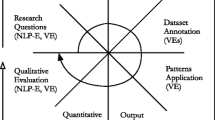Abstract
Use cases are effective techniques to express the functional requirements of a system in a very simple and easy-to-learn way. Use cases are mainly composed of natural language (NL) sentences, and the use of NL to describe the behaviour of a system is always a critical point, due to the inherent ambiguities originating from the different possible interpretations of NL sentences. We discuss in this paper the application of analysis techniques based on a linguistic approach to detect, within requirements documents, defects related to such an inherent ambiguity. Starting from the proposed analysis techniques, we will define some metrics that will be used to perform a quality evaluation of requirements documents. Some available automatic tools supporting the linguistic analysis of NL requirements have been used to evaluate an industrial use cases document according to the defined metrics. A discussion on the application of linguistic analysis techniques to support the semantic analysis of use cases is also reported.




Similar content being viewed by others
References
Abrial JR. The B book—assigning programs to meanings. Cambridge University Press, Cambridge, UK, 1996
Alspaugh TA, Antòn AI. Scenario networks: a case study of the enhanced messaging system. In: Proceedings of the 7th International Workshop on Requirements Engineering: Foundation for Software Quality REFSQ'01, Interlaken, Switzerland, 4–5 June, 2001
Ambriola V, Gervasi V. Processing natural language requirements. In: Proceedings of the 12th IEEE Conference On Automated Software Engineering (ASE'97), Lake Tahoe, CA, 2–5 November, 1997
Ben Achour C, Tawbi M and Souveyet C. Bridging the gap between users and requirements engineering: the scenario-based approach (CREWS Report Series 99–07). Int J Comp Sys Sci Engin, 1999; 14(6):112–122
Bolognesi T, Brinksma E. Introduction to the ISO specification language LOTOS. Comp Netwks, 1987; 14(1):25–59
Cockburn A. Writing effective use cases. Addison-Wesley, Reading, MA, 2000
Cockburn A. Structuring use cases with goals. J Obj-Or Program, 1997; 9(5):35–40 and 9(6):56–62
Connexor tool. http://www.connexor.com/demos.html. Cited 2002
Dutoit AH, Peach B. Developing guidance and tool support for rationale-based use case specification. In: Proceedings of the 7th International Workshop on Requirements Engineering: Foundation for Software Quality REFSQ'01, Interlaken, Switzerland, 4–5 June, 2001
Van der Linden F. Software product families in Europe: The ESAPS and Café projects. IEEE Soft, 2002; 19(4):41–49
Fantechi A, Gnesi S, Ristori G, Carenini M, Vanocchi M and Moreschini P. Assisting requirement formalization by means of natural language translation. Form Meth Sys Des, 1994; 4(3):243–263
Fabbrini F, Fusani M, Gnesi S and Lami G. An automatic quality evaluation for natural language requirements. In: Proceedings of the 7th International Workshop on Requirements Engineering: Foundation for Software Quality REFSQ'01, Interlaken, Switzerland, 4–5 June, 2001
Fabbrini F, Fusani M, Gnesi S and Lami G. The linguistic approach to the natural language requirements quality: benefits of the use of an automatic tool. In: Proceedings of the 26th Annual IEEE Computer Society—NASA Goddard Space Flight Center Software Engineering Workshop, Greenbelt, MD, 28–29 November, 2001
Fuchs NE, Schwitter R. Specifying logic programs in controlled natural language. In: Proceedings of the Workshop on Computational Logic for Natural Language Processing, Edinburgh, Scotland, 3–5 April, 1995
Goldin L, Berry DM. Abstfinder, a prototype abstraction finder for natural language text for use in requirements elicitation: design, methodology, and evaluation. In: Proceedings of the First International Conference on Requirements Engineering, Colorado Springs, CO, 18–22 April, 1994
Hooks I. Writing good requirements. In: Proceedings of the Fourth International Symposium of the NCOSE, San Jose, CA, 10–12 August, 1994
International Standards Organization. Information Technology—Software Process Assessment: (Part 1 – Part 9), ISOIIEC TR2 1550G, Geneva, Switzerland, 1998
Jacobson I, Booch G and Rumbaugh J. The unified modelling language reference manual. Addison-Wesley, Reading, MA, 1999
Kamsties E, Peach B. Taming ambiguity in natural language requirements. In: Proceedings of the ICSSEA 2000, Paris, France, 5–8 December, 2000
Macias B, Pulman SG. Natural language processing for requirement specifications. In: Redmill F, Anderson T (eds) Safety critical systems, Chapman and Hall, London, 1993
Mich L, Garigliano R. Ambiguity measures in requirements engineering. In: Proceedings of the International Conference on Software Theory and Practice—ICS 2000, Beijing, China, 14–17 May, 2000
Natt och Dag J, Regnell B, Carlshamre P, Andersson M and Karlsson J. Evaluating automated support for requirements similarity analysis in market-driven development. In: Proceedings of the 7th International Workshop on Requirements Engineering: Foundation for Software Quality REFSQ'01, Interlaken, Switzerland, 4–5 June, 2001
Spivey JM. The Z notation: a reference manual. Prentice-Hall, London, 1992
SyTwo online. http://www.yana.it Cited 2003
Wilson WM, Rosenberg LH and Hyatt LE. Automated analysis of requirement specification. In: Proceedings of the Nineteenth International Conference on Software Engineering (ICSE-97), Boston, MA, 18–19 May, 1997
Zowghi D, Gervasi V and McRae A. Using default reasoning to discover inconsistencies in natural language requirements. In: Proceedings of the 8th Asia-Pacific Software Engineering Conference, Macau SAR, China, 4–7 December, 2001
http://www.nokia.com/phones/8310/index.html. Cited 2003
Acknowledgements
Part of the research work that is described in this paper was performed under the Eureka Σ2023 Programme, ITEA (ip00004, CAFÉ [10]).
Author information
Authors and Affiliations
Corresponding author
Rights and permissions
About this article
Cite this article
Fantechi, A., Gnesi, S., Lami, G. et al. Applications of linguistic techniques for use case analysis. Requirements Eng 8, 161–170 (2003). https://doi.org/10.1007/s00766-003-0174-0
Received:
Accepted:
Published:
Issue Date:
DOI: https://doi.org/10.1007/s00766-003-0174-0




